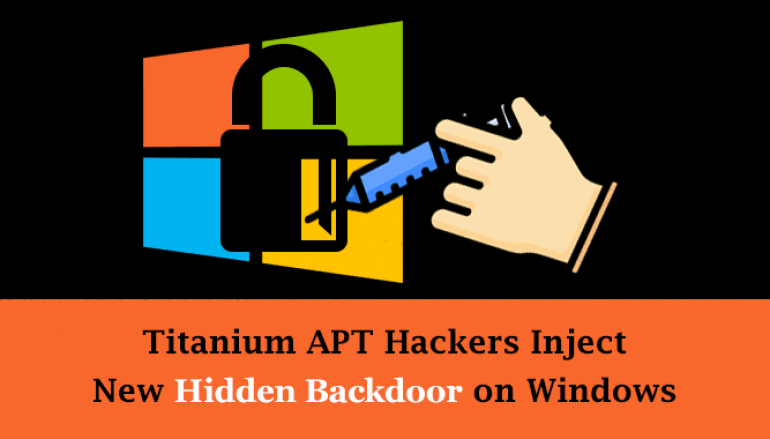
Titanium APT Hackers Inject New Hidden Backdoor on Windows Using Fileless Technique
A new wave of malware attack strikes again from the Titanium APT group that infects windows with hidden backdoor by mimicking common legitimate software and fileless technique.
Titanium APT is one of the technologically advanced hacking group, they are using the various sophisticated technique to attack the target, and their method of attack makes very hard to detect their activities in wide.
Additionally, their malware file system cannot be detected as malicious due to the use of encryption and fileless technologies to infect the victims.
Titanium APT mainly targeting the APAC region, and the current attack believed to be focused on South and Southeast Asia.
Researchers from Kaspersky uncovered that the malware hides at every step by mimicking common software (protection related, sound drivers software, DVD video creation tools).
Titanium APT Backdoor Infection Stages
Before installing a backdoor on a windows computer in the final stage, threat actors following complex sequences of dropping, downloading, and installing stages.
During this process, in every stage, they are mimic known software, such as security software, software for making DVD videos, sound drivers’ software to evade detection.
Researchers believe that the attackers using the local intranet website with malicious code to spread the malware.
In another way, Titanium APT inject the shellcode into a process called winlogon.exe, a legitimate process file popularly known as Windows Logon Application that performs a variety of critical tasks related to the Windows sign-in process. Kaspersky said via blog post.
The shellcode itself contains position-independent code connect to the hardcoded C&C address, download an encrypted payload then decrypt and launch it using a hardcoded unpacking password.
Titanium Threat actors always have a habit to use of Wrapper DLLs to decrypt and load an encrypted file on the system memory.
In order to maintain the persistence on the victim’s machine, threat actor using Windows task installer, a password-encrypted SFX archive that can be downloaded via BITS Downloader.
BITS downloader library helps to download files in encrypted form from the C&C and launch them.
Installing the Backdoor
At the final stage, the process of installing a backdoor, attackers uses the Trojan-Backdoor installer that launched from the command line using a password to unpack it.
Installer receives a command from the C2 server by sending an empty request to the C2 server, and the malware can also get proxy settings from Internet Explorer.
In response, C2 Server sending a PNG file that contains steganographically hidden data. This data is encrypted with the same key as the C&C requests. The decrypted data contains backdoor commands to steal the data from infected victims.
This post Titanium APT Hackers Inject New Hidden Backdoor on Windows Using Fileless Technique originally appeared on GB Hackers.






